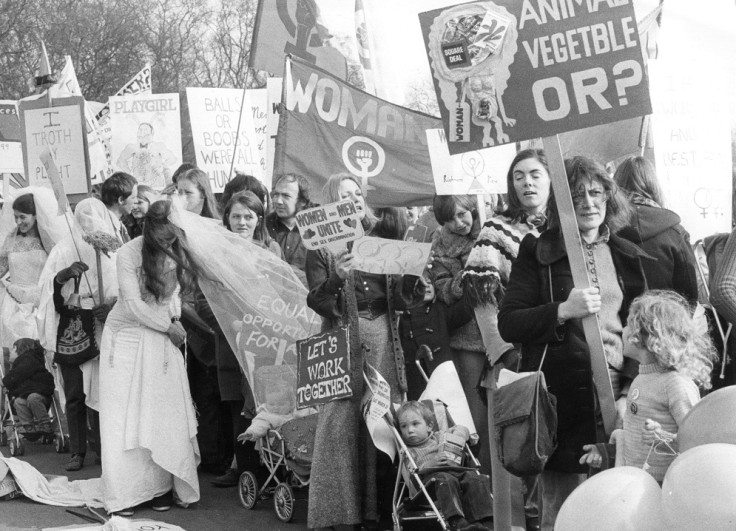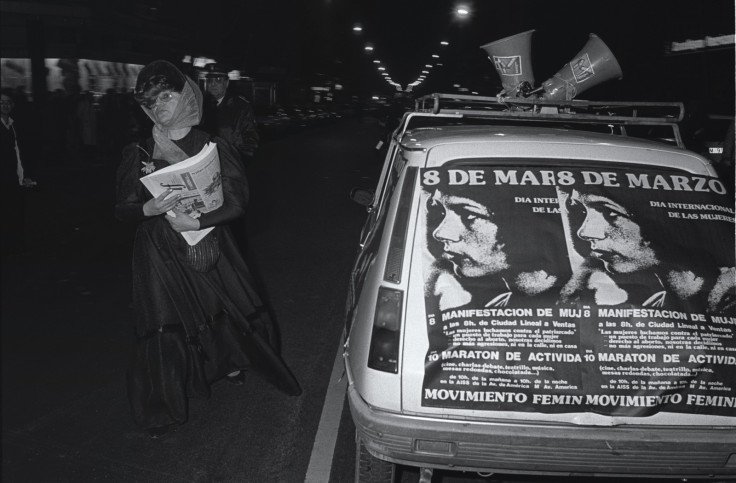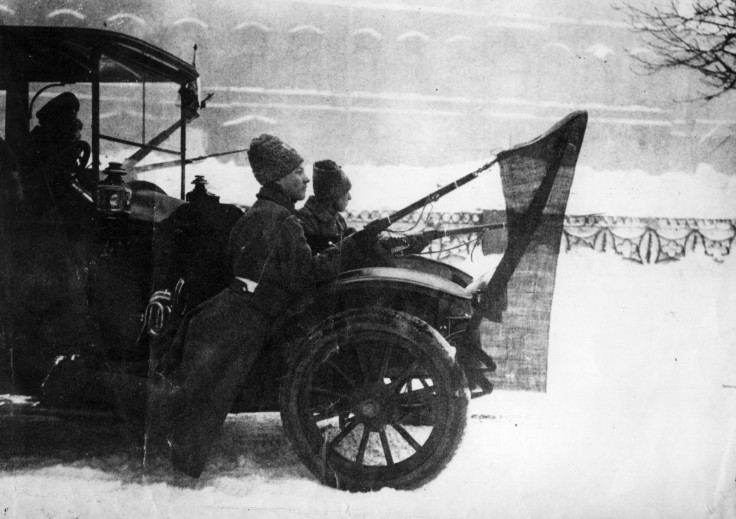International Women's Day 2015: A history of the century-old celebration of female rights and empowerment

From campaigning for women's suffrage to equal representation in politics, International Women's Day has celebrated the social, economic and political achievements of women for more than a century. Observed annually on 8 March, the day is an opportunity to celebrate the accomplishments of women while calling for greater equality and drawing focus on women's rights.
The day has manifested itself in many different forms in the last 100 years, from its beginnings in women's suffrage to highlighting violence against women in the 21<sup>st century. Yet the aim of the date has endured – to push governments to recognise the necessity of sex and gender equality in law.
"International Women's Day is a great opportunity to highlight the continued challenges faced by women and girls across the world – at home and abroad," Antonia Kirkland of the international human rights organisation Equality Now tells IBTimes UK.
"The day is a key moment to help ensure that both international and national-level policy makers recognise the importance of equality in the law to end all forms of violence and discrimination against girls and women through good laws that promote the human rights of women and girls, including legal, social, economic, civil and political equality."
Thousands of events now take place around the world for IWD. But where did the day come from?

Earliest demonstrations
Although there have been women-led marches, strikes and other protests since 1909, none happened on the 8 March. The earliest Women's Day observance was held on 28 February 1909 in New York, organised by the Socialist Party of America in remembrance of the 1908 strike of the International Ladies' Garment Workers' Union.
In August 1910, an International Women's Conference was organised to precede the general meeting of the Socialist Second International in Copenhagen, Denmark. German socialist Luise Zietz, inspired by the American socialists, proposed the establishment of an International Woman's Day to promote equal rights and women's suffrage – which was seconded by fellow socialist Clara Zetkin.
On 19 March 1911, IWD was observed for the first time by over a million people in Denmark, Germany, Austria and Switzerland. Women demanded that they be given the right to vote and hold public office and protested against employment sex discrimination. The day was first observed by Russian women in 1913 on the last Sunday in February.
Russian revolution
The first observance of IWD on 8 March was in 1914. British suffragette leader Sylvia Pankhurst was arrested in front of Charing Cross station on her way to speak in Trafalgar Square in London, amid a march from Bow in support of the right to vote. Three years later, IWD demonstrations in Saint Petersburg initiated the February Revolution.
Russia had been suffering from a number of economic and social problems, compounded by the impact of World War I. Russian women went on strike on IWD for "bread and peace" – demanding the end of the war, an end to food shortages and the end of czarism.

Mass demonstrations and armed clashes with police and gendarmes, the last loyal forces of the Russian monarchy, eventually led to the abdication of Tsar Nicholas II at the end of the Romanov dynasty and the Russian Empire.
Following the October Revolution later that year and the establishment of the Soviet Union, an official day was adopted and celebrated in communist and socialist countries – from 1922 in China and by Spanish communists from 1936. In the West, IWD was first observed as a popular event after 1977 when the UN General Assembly invited member states to proclaim 8 March as the UN Day for women's rights and world peace.
Modern observance
Since the earliest celebrations, IWD has grown into global movement in both developing countries and wealthier states. The theme for 2015 is "Make It Happen" – calling for further action for advancing and recognising women, from ending the violence that affects one in three women worldwide, to increasing the global number of female parliamentarians from 22%.
Strengthened by four global United Nations women's conferences, the commemoration of IWD is a rally point to build support for women's rights and participation in the political and economic arenas, while reflecting on the acts of courage and determination made by women in the fight for equality so far.
Make your voice heard using the hashtags #MakeItHappen, #IWD2015, #InternationalWomensDay and #PaintItPurple. To find an event near you, visit the IWD website here.
© Copyright IBTimes 2025. All rights reserved.




















